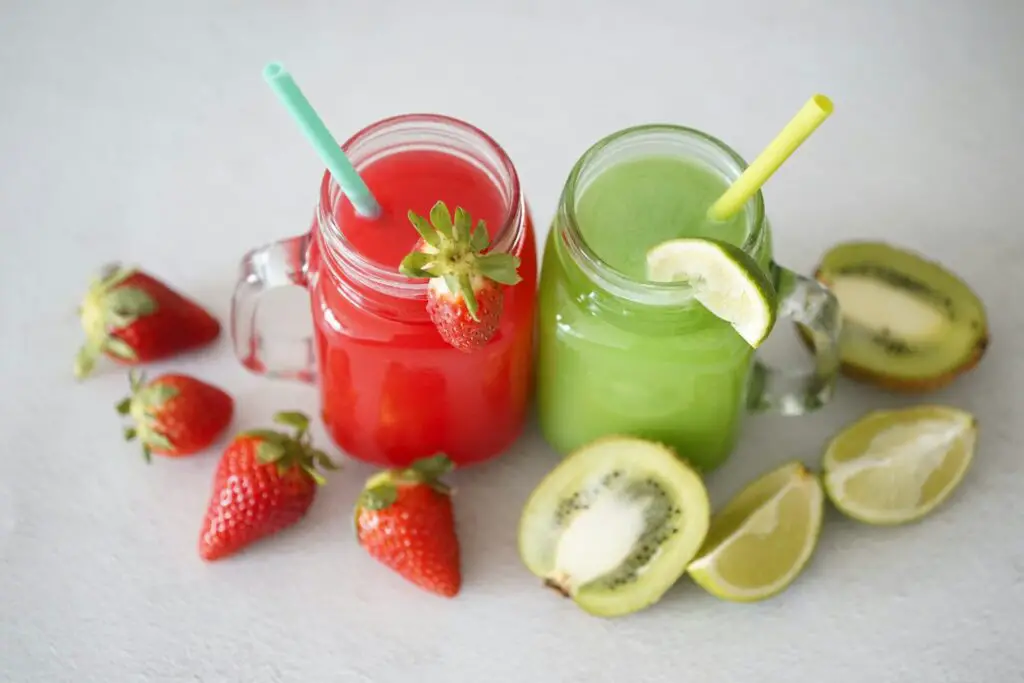Juicing has become a popular way to boost health and vitality, offering a convenient method to consume essential vitamins and minerals found in fruits and vegetables. But not all fruits and vegetables are equally suited for juicing. Let’s explore the best options for your juicing journey.
Fruits for Juicing
Citrus Fruits: Oranges, grapefruits, lemons, and limes are excellent for juicing. They are high in vitamin C and antioxidants, and their tangy flavor can enhance any juice blend.
Apples: A juicing favorite, apples add a natural sweetness and are rich in vitamins A and C.
They also contain soluble fiber, which promotes digestive health.
Pineapple: This tropical fruit is not only delicious but also packed with bromelain, an enzyme that aids in digestion and has anti-inflammatory properties.
Berries: Strawberries, blueberries, and raspberries are nutrient powerhouses, high in antioxidants and vitamins. However, they yield less juice than other fruits, so they are often combined with juicier fruits.
Grapes: Grapes are a great source of resveratrol, a compound known for its heart-health benefits. Their natural sweetness is a great way to sweeten any juice blend.
Vegetables for Juicing
Leafy Greens: Kale, spinach, and Swiss chard are rich in vitamins A, C, and K, as well as minerals like iron and calcium. Leafy greens are a staple in green juices.
Carrots: High in beta-carotene, which is converted to vitamin A in the body, carrots also provide a sweet flavor to vegetable juices.
Beets: Known for their vibrant color and earthy taste, beets are high in folate and manganese. They are also believed to help improve blood flow and lower blood pressure.
Celery: A great base for any vegetable juice, celery is low in calories yet rich in vitamins A, C, and K, and potassium.
Cucumbers: With their high water content, cucumbers add volume to your juice without overpowering the flavor. They are also cooling and hydrating.

Combining Fruits and Vegetables
When juicing, combining fruits and vegetables can balance flavors and increase nutritional content. For example, adding a lemon or lime can enhance the taste of leafy greens, while apples or carrots can add sweetness to mitigate the earthiness of beets.
Tips for Juicing
Wash Produce Thoroughly: To ensure safety and remove any pesticides or contaminants.
Use Organic When Possible: This minimizes the intake of pesticides and chemicals.
Mix Colors: Combining a variety of colors ensures a range of nutrients.
Drink Fresh: Juice is best consumed soon after it’s made to benefit from the most nutrients.
Juicing is an excellent way to increase your intake of fruits and vegetables. By selecting the right produce and combining them wisely, you can enjoy delicious, nutritious juices that contribute to your overall health and well-being. Whether you prefer sweet, tangy, or earthy flavors, there’s a combination that’s perfect for you.
Understanding the Nutritional Benefits of Juiced Produce
While juicing extracts the nutrient-rich juices, it’s important to note that it often removes the fiber content. Fiber is crucial for digestive health and helps regulate blood sugar levels. To balance this, consider incorporating whole fruits and vegetables into your diet alongside juicing.
Experimenting with Flavors and Combinations
Don’t be afraid to experiment with different combinations to find what tastes best to you. For a tropical twist, try mixing pineapple with kale, or for a more refreshing taste, cucumber and mint with a splash of lime. Herbs like ginger and turmeric can be added for an extra kick and additional health benefits.
Juicing for Specific Health Goals
Different fruits and vegetables offer specific health benefits:
Detoxification: Ingredients like lemon, beetroot, and ginger are known for their detoxifying properties.
Energy Boost: For a natural energy lift, try juicing apples, oranges, or spinach.
Immune Support: Citrus fruits, berries, and leafy greens can help support the immune system.

Seasonal and Local Juicing
Using seasonal and locally-sourced fruits and vegetables not only supports local agriculture but also ensures you’re getting produce at its peak nutritional value and taste. Seasonal juicing can introduce a variety of produce into your diet throughout the year, keeping your juicing routine exciting and diverse.
Juicing for Everyone
Juicing can be beneficial for people of all ages and lifestyles. Whether you’re an athlete looking for a post-workout replenishment, someone trying to boost their daily nutrient intake, or just looking for a refreshing beverage, there’s a juice blend for everyone.
Sustainability in Juicing
When juicing, it’s important to consider the waste produced, especially pulp waste. You can use the leftover pulp in creative ways such as in baking, composting, or even making vegetable broths.
Juicing offers a myriad of possibilities, from health benefits to delicious flavor combinations.
It’s an accessible and enjoyable way to boost your intake of essential nutrients. Remember to enjoy your juices as part of a balanced diet to truly reap their benefits. With the right ingredients and a little creativity, juicing can be a delightful and healthful journey.
FAQs on Juicing with Fruits and Vegetables
How often should I drink juice for optimal health benefits?
While juicing can be beneficial, it should complement a balanced diet rather than replace it. Consuming one to two servings of juice daily, preferably in the morning or as a snack, is generally recommended.
Can juicing help with weight loss?
Juicing can aid in weight loss by providing a nutrient-rich, low-calorie alternative to processed snacks and beverages. However, it should be part of a balanced diet and combined with regular exercise for effective weight loss.
Is it better to juice or blend fruits and vegetables?
Juicing extracts liquid and nutrients, leaving behind fiber, while blending includes the whole fruit or vegetable, fiber included. Both methods have their benefits; juicing offers nutrient-rich, easily digestible drinks, while blending provides the full benefits of fiber.
Can I store my juice for later use?
Freshly prepared juice is best consumed immediately, but if necessary, you can store it in an airtight container in the refrigerator for up to 24 hours. Beyond this, it may lose nutritional value and taste.
Are there any risks associated with juicing?
Juicing is generally safe for most people, but overconsumption can lead to an imbalance of nutrients, particularly in sugars and calories. Also, those with certain health conditions like diabetes should be cautious with high-sugar fruits.
How do I ensure my juice is not too high in sugar?
To keep sugar content in check, use more vegetables than fruits in your juices. Leafy greens, cucumbers, and celery are great low-sugar options. When using fruit, opt for those lower in sugar like berries and green apples.
Can I juice if I have a specific health condition?
While juicing can be beneficial for many, it’s important to consult with a healthcare provider if you have health conditions like diabetes, kidney disease, or digestive issues, as certain fruits and vegetables may affect these conditions.
How can I make my juice more protein-rich?
Juices typically lack protein since they primarily consist of fruits and vegetables. To add protein, consider blending your juice with yogurt, a scoop of protein powder, or consuming it with a protein-rich snack.
What is the best time to drink juice?
Drinking juice on an empty stomach, such as in the morning, can aid in the efficient absorption of nutrients. However, it can be enjoyed any time of the day as a healthy beverage option.
Should children drink freshly made juices?
Yes, children can drink freshly made juices, but it should be in moderation and not replace whole fruits and vegetables in their diet. It’s also important to be mindful of the sugar content in the juices.




